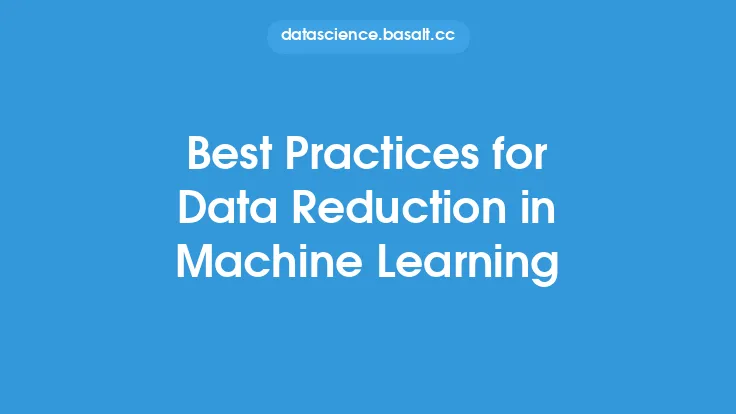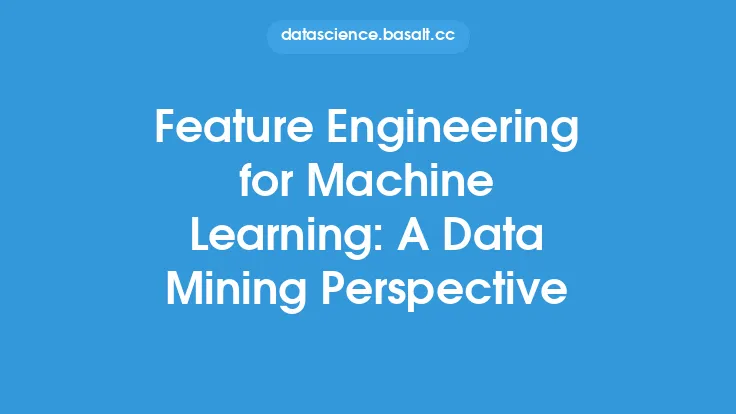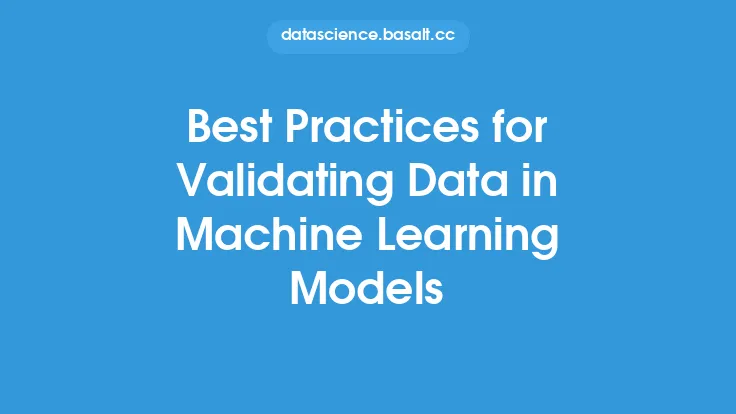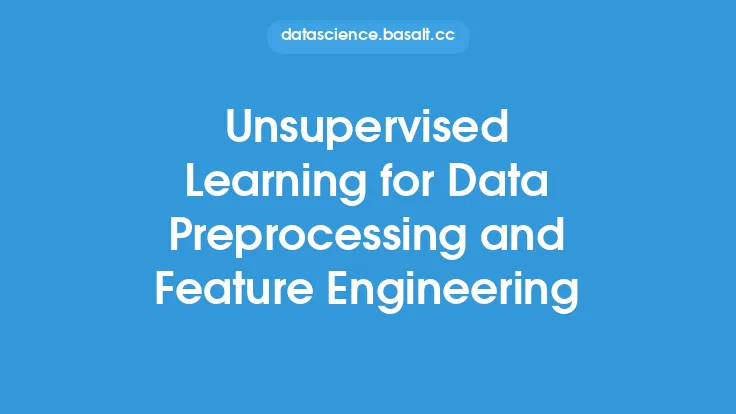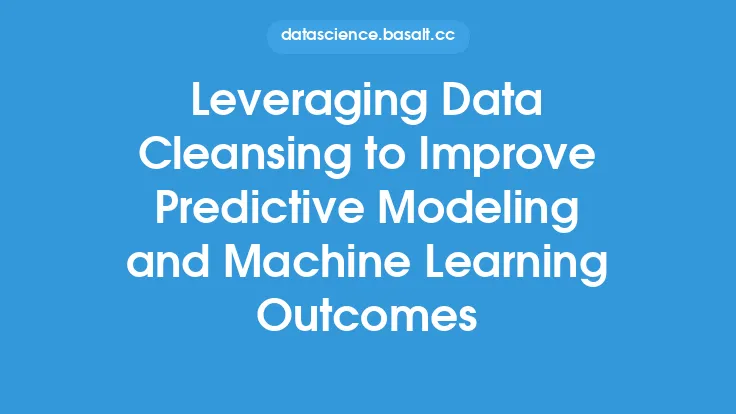Data preprocessing is a crucial step in the machine learning workflow, as it directly affects the performance and accuracy of the algorithms used. The goal of data preprocessing is to transform raw data into a format that is suitable for modeling, by handling issues such as noise, inconsistencies, and missing values. In this article, we will delve into the details of data preprocessing for machine learning algorithms, exploring the various techniques and methods used to prepare data for modeling.
Introduction to Data Preprocessing Techniques
Data preprocessing techniques can be broadly categorized into two main types: feature engineering and data transformation. Feature engineering involves selecting and transforming the most relevant features from the raw data, while data transformation involves converting the data into a format that is suitable for modeling. Some common data preprocessing techniques include data normalization, feature scaling, encoding categorical variables, and handling missing values. These techniques are essential for ensuring that the data is in a suitable format for modeling, and for preventing issues such as overfitting and underfitting.
Feature Engineering for Machine Learning
Feature engineering is a critical step in the data preprocessing workflow, as it involves selecting and transforming the most relevant features from the raw data. The goal of feature engineering is to create a set of features that are informative, relevant, and useful for modeling. Some common feature engineering techniques include feature extraction, feature selection, and feature construction. Feature extraction involves extracting relevant features from the raw data, while feature selection involves selecting the most relevant features from a larger set. Feature construction involves creating new features from the existing ones, using techniques such as dimensionality reduction and feature aggregation.
Data Transformation for Machine Learning
Data transformation is another critical step in the data preprocessing workflow, as it involves converting the data into a format that is suitable for modeling. Some common data transformation techniques include data normalization, feature scaling, and encoding categorical variables. Data normalization involves scaling the data to a common range, usually between 0 and 1, to prevent features with large ranges from dominating the model. Feature scaling involves scaling the data to have zero mean and unit variance, to prevent features with large variances from dominating the model. Encoding categorical variables involves converting categorical variables into numerical variables, using techniques such as one-hot encoding and label encoding.
Handling Noise and Outliers in Data
Noise and outliers are common issues in datasets, and can significantly affect the performance and accuracy of machine learning algorithms. Noise refers to random errors or fluctuations in the data, while outliers refer to data points that are significantly different from the rest of the data. Some common techniques for handling noise and outliers include data smoothing, data filtering, and outlier detection. Data smoothing involves removing noise from the data, using techniques such as moving averages and exponential smoothing. Data filtering involves removing outliers from the data, using techniques such as median filtering and Gaussian filtering. Outlier detection involves identifying outliers in the data, using techniques such as statistical methods and machine learning algorithms.
Evaluating the Effectiveness of Data Preprocessing
Evaluating the effectiveness of data preprocessing is critical, as it directly affects the performance and accuracy of machine learning algorithms. Some common metrics for evaluating the effectiveness of data preprocessing include accuracy, precision, recall, and F1 score. Accuracy refers to the proportion of correctly classified instances, while precision refers to the proportion of true positives among all positive predictions. Recall refers to the proportion of true positives among all actual positive instances, while F1 score refers to the harmonic mean of precision and recall. These metrics can be used to evaluate the effectiveness of different data preprocessing techniques, and to select the best technique for a given problem.
Common Data Preprocessing Tools and Techniques
There are several common data preprocessing tools and techniques used in machine learning, including Python libraries such as Pandas, NumPy, and Scikit-learn. Pandas is a library for data manipulation and analysis, while NumPy is a library for numerical computing. Scikit-learn is a library for machine learning, and provides a wide range of algorithms for classification, regression, clustering, and other tasks. Other common data preprocessing tools and techniques include data visualization libraries such as Matplotlib and Seaborn, and big data processing frameworks such as Hadoop and Spark.
Best Practices for Data Preprocessing
There are several best practices for data preprocessing, including exploring and understanding the data, handling missing values and outliers, and evaluating the effectiveness of data preprocessing. Exploring and understanding the data involves visualizing the data, summarizing the data, and identifying patterns and relationships. Handling missing values and outliers involves using techniques such as imputation, interpolation, and outlier detection. Evaluating the effectiveness of data preprocessing involves using metrics such as accuracy, precision, recall, and F1 score, and selecting the best technique for a given problem. By following these best practices, data scientists and machine learning engineers can ensure that their data is properly preprocessed, and that their models are accurate and reliable.
Future Directions for Data Preprocessing
The field of data preprocessing is constantly evolving, with new techniques and methods being developed all the time. Some future directions for data preprocessing include the use of deep learning algorithms for feature engineering and data transformation, the development of new data preprocessing techniques for handling complex and high-dimensional data, and the integration of data preprocessing with other machine learning tasks such as feature selection and model selection. Additionally, the increasing availability of large and complex datasets is driving the development of new data preprocessing techniques, such as distributed and parallel processing, and the use of cloud computing and big data processing frameworks. As the field of machine learning continues to evolve, the importance of data preprocessing will only continue to grow, and new techniques and methods will be developed to meet the challenges of handling complex and high-dimensional data.
